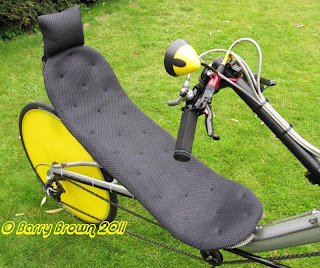Been a Busy "B" Lately.
Bags
A Draw Corded Ditty Bag.
I was asked if I could create a standard sized bag with a hemp draw cord by some folks in Canada, and yes; I know I said I was not going to do this type of work again, but as I happened to have a couple of unfinished bag bodies, and also because I find it hard to say No! I got to work, and below is what I came up with from my brief.
The folks from Canada never got back to me; but luckily the bag has now been sold to another more deserving person :-)
Hand seamed in 12oz Cotton Duck canvas, with 6 hand sewn grommet eyelets.
Threaded with a Hemp draw cord, the ends joined with a doubled Bosun's Lanyard knot, and finished with a seizing in waxed Hemp twine.

The sliding closure; or puckering knot is a single strand Mathew Walker knot, made with my own hand laid Hemp twine; and sized with a natural sealer.
Some of the tools of the my trade.
Puckered up and ready to go.
Bugs.
In between jobs I decided to do a little R&R in the garden; and whilst minding my own business a little Grass Hopper hopped over for a chat, before gettign down to the business of making little Grass Hopper's with his mate; whom was keeping an eye on her mate from the adjasent Rose.
& Bikes.
And on to the business of serious fun making!
I have been fetteling with my race / road training bike over the past few weeks, I still have a way's to go yet but this is what I have done so far.
I concentrated mainly on the rear wheel and wheel disks, the original Carbon fibre moulded disks I made; and had great success with; actually winning races in my class ;-) have now been passed on and I set about building a whole new rear wheel, the main reason for a new wheel was to trim a little weight off, quieten th e thundering noise I got every time I hit a bumb; and that the original rim did not have enough surface area for attaching the fabric covering.
The covering is is a very light weight ripstop nylon which is stretched and bonded to the rim before being sealed with cellulose.
here on the non drive side you can see the foil tape patch that gives access to the valve stem for pumping the tyre, the patch make the wheel more aerodynamic than if it was left with the gaping hole in it.
I then got down to the business of comfort and made a new air mesh padded seat pad, and pillow neck rest from the same materials, and I can confirm that it is too comfortable, I have been spotted napping on several occasions whilst out and presumably training ;-)
I could not help myself and had to add a nice dimpled look to the pad very cushy.
I still have the new bars I made to fit, which include a whole new brake and gear operating system, some serious chopping and modding going on there.
more to follow soon?
Take care,
Barry ;-)



















































